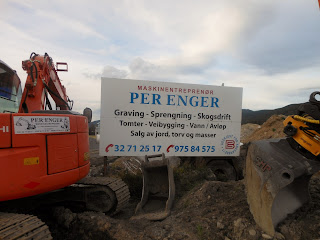Jacqueline Jean Gries was my third born child. The unwanted pregnancy came in 1961 at a time when my marriage to her father was on a downhill slide towards divorce. I was not at all happy about bringing another child into this unhappy world. My husband and I had been married when we were still children ourselves, ages 16 and 18, and as we became adults we found that we really didn't like each other that much, Our ideas on almost everything were miles apart and I thought he was mean and selfish. We already had two children. a girl age 4 and a boy age 3--a third one was just not in the plan. During the very early months of the pregnancy I acted happy on the outside, but I secretly harbored the hope that I might have a miscarriage. Later I became more or less resigned to the idea of having three children to deal with during a future divorce.
Then she was here! On August 6, almost a month before the predicted birth date, we were on the way to the hospital, and this tiny little girl was born. She was beautiful, and I fell instantly in love! She weighed only 5 lbs. 4 oz., and in the first few days went down to 4 lbs. 8 oz., The doctors told me she would have to stay in the hospital after I was released until she was 5 lbs. I went home and cried for a week until I could bring her home. And from that day my life was never the same.
From Day One Jackie was tiny but mighty! There was never a question about how she felt or what she would or would not do. Even though her time on this Earth was short, she made an impact on all who knew her and loved her. I think this poem that I wrote about her after her death pretty much sums it up.
A MOTHER REMEMBERS
I remember--Was it only yesterday? No, a score of years
has passed since she was born. and became a part of me.
A tiny scrap of humanity. An unwanted interruption in
my own troubled life. Yet, it took but a glimpse of her to
win me over. I left her in the hospital incubator and cried
for a week until she was back in my arms. I held her close
and she became entrenched in m soul, then --
I remember--A little girl with golden curls and sunny smiles
that could turn stone into putty. Those smile would too often
give way to frowns and tears, but would return again in an instant
when things went her way. Her "ups and downs" of temperament
were humorous for one so small--they became a family joke.
Her art of manipulating others with her little tantrums was "cute," then--
I remember.
I remember--she could sing like a bird. "Stars of Tomorrow" winner
at age five;--belting out "How Great Thou Art" for the church congregation,
memorizing all the verses. The first heartbreak;--a diagnosis of petit mal;
brain scans; medications. "Your daughter will not pay attention in class.
She does not concentrate." Learning disability? Perhaps, but that now
fashionable phrase was not in vogue, then--
I remember.
I remember--the young adolescent. The beginnings of rebellion.
The wrong friends; boys that were too old; lying; sneaking out;
same old school story: "She won't pay attention." She disrupts
the class." Emotional outbursts intensified and were not longer "cute."
I could not reach her. But her smiles, when they came, still melted
me and weakened my resolve, then--
I remember.
I remember--The breakdown. Only 16, her brain scrambled by
unknown inner torment. The rat race! Hospital snake pits,
all bad, some worse. Psychiatrists, group homes, drugs designed
to create human zombies. "Manic depression" from one doctor;
Schizophrenic" from another. "Angel Dust" from a third.
"Chronic condition" I was told. "Only temporary" I was also told.
This Hell on Earth lasted three years; an eternity, then--
I remember.
I remember--The hospital scene was finally over, but the girl was
not the same. Barely 20, with no hope for the future, no purpose
in life, wanting only to die. Then she was running, from what?
Jumping from one place to another, from one bed to another.
Sometimes, when she had nowhere else to go, she came home
for a while. "Give up on her," I was told. "You have done what
you can. Forget her!" Per haps I should have, but I could not, then---
I remember--The phone call! The one I had long feared, yet
hoped would never come. "Your daughter is dead.--She has been shot.--
It was suicide." The shock, the disbelief, the anger, the resignation.
The pain is finally over for her, but not for me. Her turmoil
is ended, but not mine. She was not meant for this world.
Farewell my child, my love. W e will meet again someday and
things will be perfect, then--
I remember!
In memory of Jacqueline Jean Gries, 1961-1982.

















































